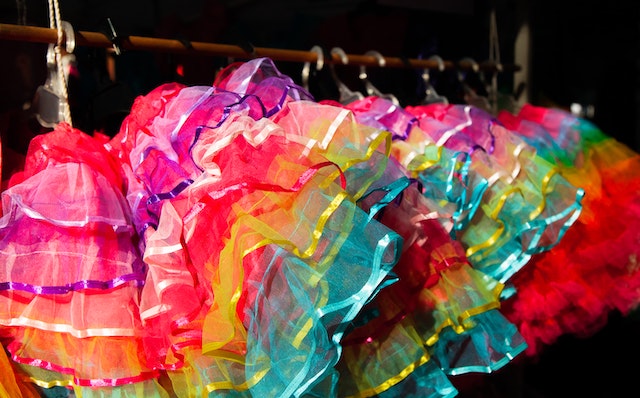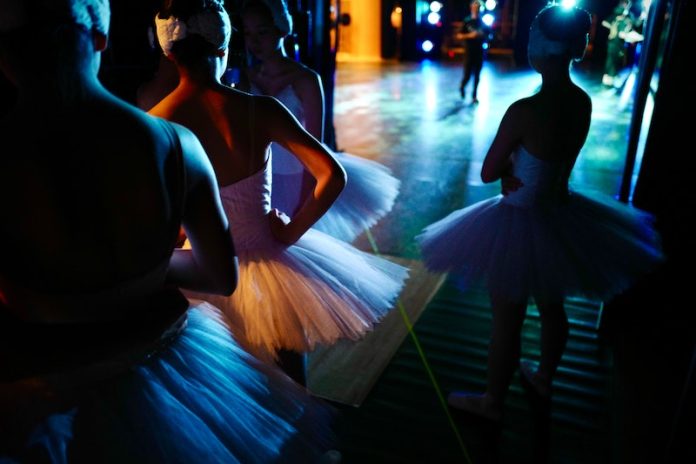A review of childhood performance of gender on the school stage
When my six-year-old son had his first performing arts night at school, expectations were high. His cute little costume of black pants, crisp white shirt and lime green dicky bow and braces were ready weeks in advance, hung in the wardrobe with pride. Songs and dance steps were learned by heart and practised daily. Everything about this night on the stage felt big and important.
It’s exactly because of the level of importance that is attached to these childhood occasions that I am writing these words now. Because aside from the obvious ‘Candy Land’ theme of the night, by the end of the first act, another very clear distinction had begun to present itself… and it was anything but sweet.
In all honesty, I did not expect to react to the show in the way that I did. I suppose my awareness and involvement in the production was as limited as it is for most. I didn’t ask questions or wonder at all when I received the email from school directing me to buy our boy costume. I certainly didn’t stop to think about what the girls would be wearing. Life is just too busy.
When the curtain rose and a troupe of kindergarten girls skipped on stage, dressed up as Shirley-Temple-style sailors singing along to ‘On the Good Ship Lollipop’, I still did not react. Their hesitant little steps across the stage were undeniably endearing and were welcomed with gasps of adoration and camera flashes from the audience. It was only when the girls lined up, placed their hands on their non-existent hips and shimmied in unison that the first feelings of unease began to creep up on me. By the time the chorus played, I realised that in the space of a few short minutes, I had just witnessed a very accurate performance of what it means to be a girl.
In a world that now tells its children that they can be anything they want to be, I can’t help but wonder why we continue to force out-of-date ideas upon them about what male and female behaviours look like? It’s not our fault; most of our participatory habits passed down to us from our parents, before being systematically reinforced at every trip to the shops, every time we turned on the television, and every time we opened a book or magazine. The conditioning runs so deep it has entered our subconscious and made it not only difficult to spot, but uncomfortable to acknowledge. The problem is that once we start to notice the patterns, they appear everywhere we look.

So here is what I noticed during our trip to ‘Candyland’ courtesy of the children of kindergarten to year three.
When the girls appeared on stage they were invariably dressed in identical costumes, which were (predictably) figure hugging, restrictive or pink. The boys on the other hand wore a variety of clothing, which was on occasion matching, but which at least offered them the luxury of uninhibited movement and protection. The boys could enjoy the experience of knee-sliding across the stage, moshing with friends, or breakdancing without fear of pain or indecent exposure.
The girls dances were choreographed as a collective; they were seen only in groups of two or three or as a full troupe acting as one. When it came to the older boys, their performances were arranged in more of a ‘dance off’ style, with the most athletic boys taking centre stage. How do we ennoble our girls when we continue to present them as passive princesses on the same stage where our boys are encouraged to compete with one another?
And then there was the music: literally the words our children were all encouraged to sing and dance to in innocent oblivion. The lyrics to ‘Sugar Pie Honey Bunch’, in which six-year-old boys reminded us “I can’t help myself, I want you and no-one else” to little girls dressed as pink marshmallows singing “You are my candy girl/And you got me wanting you”, honoured the age-old tradition of girls as possessions and the assumption they should be flattered to be noticed.
To add insult to injury, I also couldn’t help but notice the difference in the prescribed approaches to food between the genders. The male relationship to food was used for comic effect, with one group dressed as gummy bears (complete with padded tummies) who enthusiastically sang “I’m a yummy, tummy, funny, lucky gummy bear” and an older group who performed a rendition of ‘Eat It’, a parody of Michael Jackson’s famous ‘Beat It’. Compare this with the opening act of the night where the youngest girls in the school held their bellies and sang “If you eat too much, ooh-ooh/You’ll awake with a tummy ache”, and the difference is clear.

The night was a resounding success. The children were happy, the parents proud and enamoured. And there’s nothing wrong with that.
There’s absolutely nothing wrong with applauding and celebrating the differences between girls and boys. Until the day comes when they are no longer children, but instead grappling with the reality of a world that ultimately rewards and values one group over the other.
I spoke with Eva Cox, Adjunct Professor at the University of Technology Sydney, a public commentator and staunch feminist, who said: “Boys grow up believing they’ve got to be ‘real boys’ and the girls grow up with the idea that they’ve got to be ‘real girls’ and we don’t look at what damage that does to society.”
That ‘damage’ is real. We know that on our current trajectory we will need to wait at least another 26 years before the gender pay gap is likely to close. Worse still, despite more women entering tertiary education than men, they still only hold 18 per cent of CEO positions.
This is not just a problem for girls and women. As Cox pointed out: “We worry about getting girls into STEM, but where are the initiatives to get the boys into care areas?”
Traditionally female-dominated professions are chronically underpaid, and most males who enter those fields are quickly fast-tracked and placed in managerial roles. Until the gender mix is equal across the board, the gender pay gap will remain. While we continue to value technical and financial skills more highly than social skills, the gender pay gap will remain.
So, you might see that our children’s education is about so much more than learning to read and write, passing the HSC or achieving the highest ATAR. In fact, all these things become irrelevant if our boys and girls continue to face prejudice and inequality because of what we tell them it means to be male or female.
In the words of Professor Cox, to bring about meaningful change “there has to be choice that is not value biased” because we already know, boys and girls are not fundamentally different from one another, but they should always be equal.


